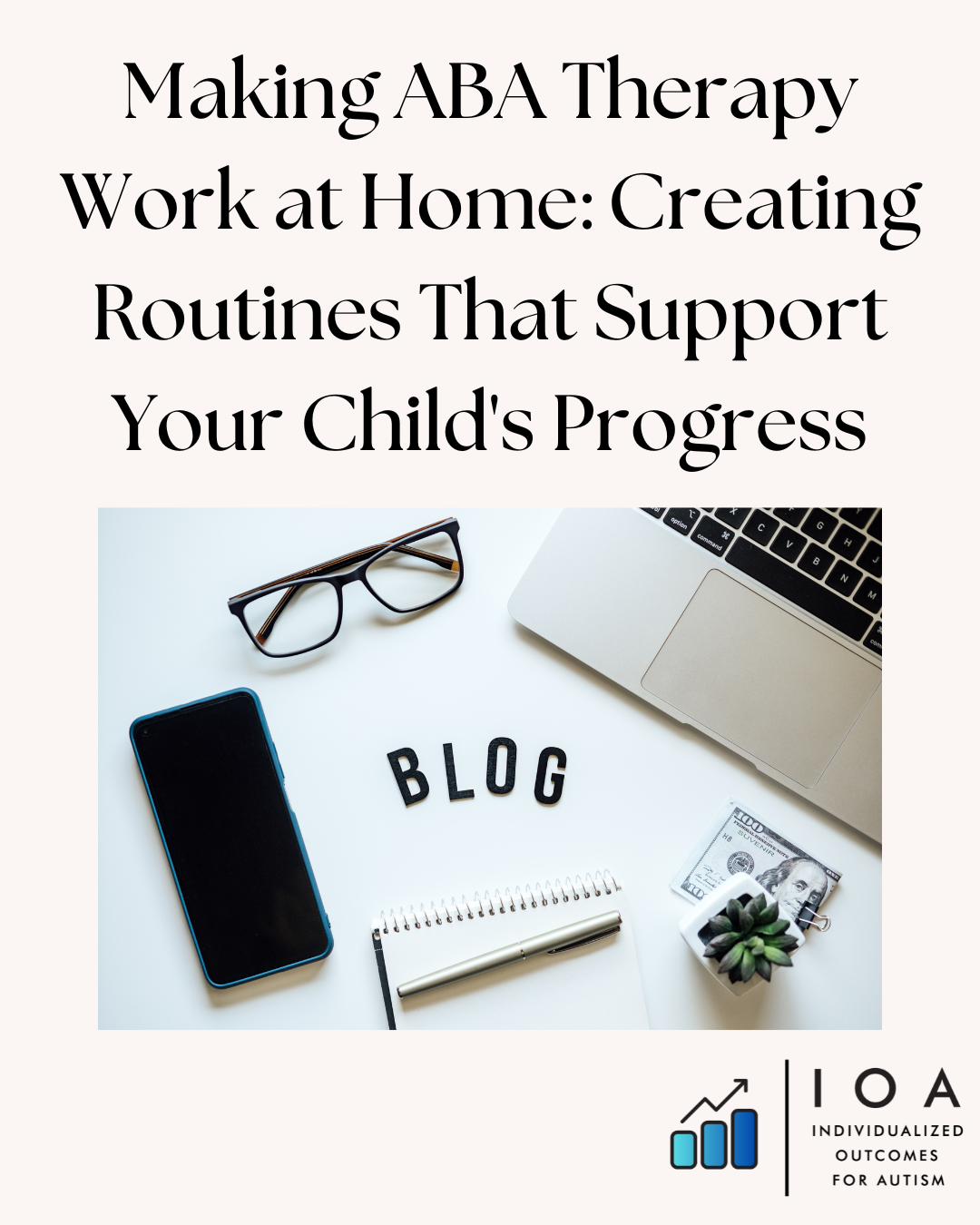Making ABA Therapy Work at Home: Creating Routines That Support Your Child’s Progress
Angela Khater, MA, BCBA, LBA
As both a parent and professional in the ABA field, I know firsthand that the real progress in Applied Behavior Analysis happens in those everyday moments at home. While your child’s therapy sessions are crucial, it’s the consistent practice and implementation of these strategies in your daily routines that truly makes the difference.
Understanding the Importance of Home Routines in ABA
ABA therapy is built on the principle that consistent, positive reinforcement can help develop important skills and reduce challenging behaviors. But here’s the thing, your BCBA or therapy team is only with your child for a limited time each week. The magic happens when we can embed these learning opportunities into everyday activities.
Starting With Your Daily Schedule
The first step in creating effective home routines is looking at your child’s natural daily schedule. Every family’s day looks different, and that’s okay. Here are some key times when you can naturally incorporate ABA strategies:
Morning routines are perfect for practicing selfhelp skills like getting dressed, brushing teeth, or making simple breakfast choices. The key is breaking these tasks down into small, manageable steps and providing the right level of prompting.
Mealtimes offer great opportunities for communication practice, whether you’re working on requesting, making choices, or engaging in social conversation. Plus, food can be a natural reinforcer!
Making Learning Opportunities Natural
One of the biggest misconceptions about ABA is that you need to create special “therapy time” at home. In reality, some of the best teaching moments happen during:
Bath time (great for learning body parts, following instructions, and water play)
Cleanup routines (perfect for categorizing, following multistep directions, and building independence)
Bedtime routines (ideal for building communication skills and emotional regulation)
Data Collection Without the Stress
While data is important in ABA, home data collection doesn’t need to be complicated. Simple notes on your phone or a quick checklist can help you track progress on specific goals. Focus on what’s most important for your child’s current programs.
Handling Challenging Behaviors at Home
Consistency is crucial when working on behavior reduction goals. Establish clear routines around:
Transition times (using visual schedules or timers)
Break requests (teaching appropriate ways to ask for space)
Reward systems (making sure they’re simple enough to maintain)
Remember that your BCBA can help you modify these strategies to fit your home environment. You should also communicate with your BCBA on a regular basis to ensure goals are working for your child.
Building Independence Through Routines
The ultimate goal of ABA is to help your child become more independent. Start by looking at your current prompting levels in daily routines. Can you fade some prompts? Are there places where you can build in more choices?
When Things Don’t Go as Planned
Let’s be honest some days, routines fall apart. That’s normal! Having a backup plan for tough days helps maintain consistency without creating extra stress. Maybe instead of the full morning routine, you have a simplified version for challenging days.
Collaborating With Your ABA Team
Your BCBA and therapy team are there to support you. Don’t hesitate to ask for:
Specific strategies for difficult times of day
Help modifying routines that aren’t working
Additional training on implementing specific programs
Ways to simplify data collection
Making Progress Sustainable
Remember that building effective routines takes time. Start with one or two priorities and build from there. Pay attention to what works for your family and be willing to adjust as needed.
The goal isn’t to turn your home into a therapy center, it’s to make learning opportunities and positive behavior support part of your natural family life. When ABA strategies become part of your daily routines, that’s when you’ll see real, lasting progress.
What small change could you make to one of your daily routines today to better support your child’s ABA goals?

